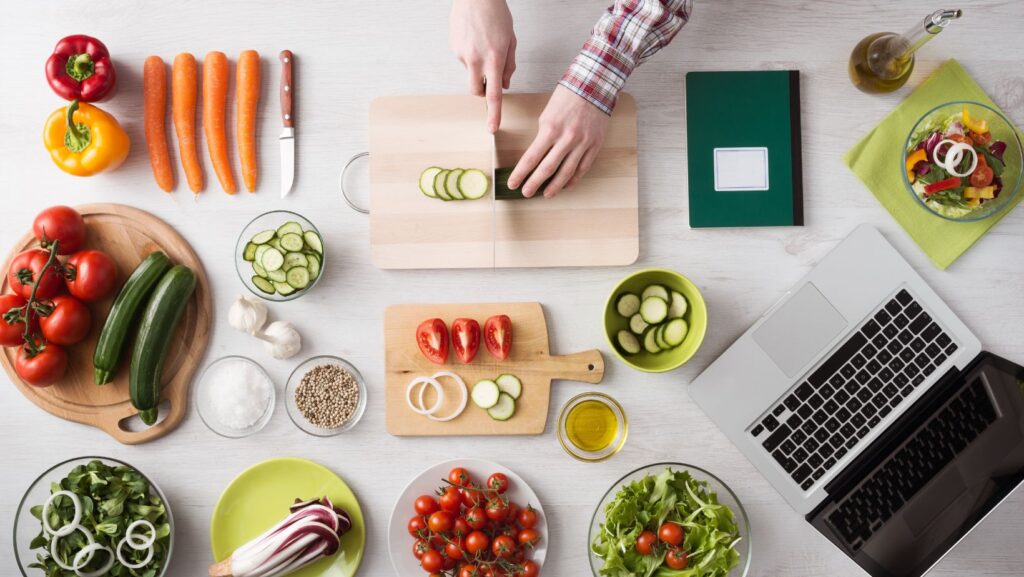Cooking should feel like a joyful act, not a test you can fail. Yet many home cooks have experienced the same anxiety: following every step in a recipe only to end up with something that doesn’t quite look or taste like the picture. Recipes are where most cooking journeys begin. They guide us, teach us techniques, and inspire us to try something new. A good recipe is like a conversation between the cook and the creator, offering both direction and freedom to explore. Over time, the goal is not just to follow recipes perfectly, but to understand them deeply enough to make them your own. Building confidence in the kitchen isn’t about perfection; it’s about learning to trust your instincts, understanding ingredients, and turning written recipes into delicious reality on your plate.
Table of Contents
Cooking confidence starts with understanding, not perfection
Most people start cooking by clinging tightly to recipes, afraid to make a single mistake. Over time, you realize that recipes are not strict rules but friendly guides. They show you the path, but you are the one walking it. Confidence comes when you start understanding why a step matters, not just how to do it. Once you see cooking as exploration instead of execution, the kitchen becomes less intimidating and far more rewarding.
Step 1: read beyond the ingredients
Before you even pick up a knife, take time to read the entire recipe carefully. Try to visualize each step and imagine the textures, colors, and aromas that will develop along the way. This mental rehearsal helps you anticipate transitions and avoid surprises while cooking. Recipes use clues hidden in verbs such as “simmer,” “fold,” or “reduce,” and each of these signals a rhythm, a pace that you learn by practice. The more you read between the lines, the more you begin to cook with intention rather than imitation.
Step 2: master the basics first
Cooking with confidence starts with mastering a few key skills. Learn how to handle a knife properly, how to control heat, and how to season food with balance. These foundations are worth revisiting until they feel natural. When you understand the basics, every new recipe becomes easier to interpret. You stop fearing mistakes because you know how to correct them. A burned onion becomes a lesson in heat management, not a failure.
Confidence also grows as you get to know ingredients. Instead of seeing measurements as limits, think of them as starting points. Learn what a splash of acidity does to a sauce or how salt enhances sweetness. Understanding the why behind ingredients transforms cooking from repetition into creativity.
Step 3: learn to adapt and improvise
Real confidence appears when you stop depending entirely on exact instructions. Once you understand a dish’s foundation, you can start to improvise. Swap herbs, change vegetables, or experiment with spices to match what you have at home. Cooking becomes an act of expression, not just completion. The key is to balance freedom with awareness: know which ingredients affect structure or texture and which are simply flavor accents.
If you run out of cream, a spoonful of yogurt might do the trick. No lemon? Try vinegar. Every time you adapt, you build a mental library of what works. These small moments of problem-solving are what transform home cooks into intuitive ones.
Step 4: practice with purpose
Confidence is built through repetition, but not mindless repetition. Practice with awareness. Choose a simple dish like roasted vegetables, and make it several times while varying one element at a time: temperature, seasoning, or cooking time. Observe the results, take notes, and learn how each change affects taste and texture. Over time, your senses become sharper. You’ll recognize when pasta is perfectly al dente or when onions are caramelized just right.
Keeping a small cooking journal helps too. Write down what worked, what didn’t, and how you felt about the process. These reflections turn casual cooking into an ongoing education, and the more you document, the faster your confidence grows.
Step 5: cook for connection, not perfection
Food tastes better when it’s shared. Cooking for others reminds you that perfection isn’t the goal—connection is. A slightly uneven pie crust won’t matter when the table fills with laughter and conversation. Each time you cook for someone, you gain a little more confidence, not just in your ability to prepare a meal, but in your ability to bring people together.
Cooking is a craft that never truly ends. Even seasoned chefs learn something new every day. The beauty of it lies in that ongoing curiosity. Confidence doesn’t mean knowing everything; it means being comfortable not knowing, experimenting anyway, and trusting yourself to learn.
Bringing it all together
Turning a recipe into reality isn’t about following every word perfectly. It’s about reading deeply, practicing often, and letting intuition guide your hands. Confidence grows one meal at a time, through mistakes, small victories, and the willingness to keep cooking. The more you practice, the more the kitchen becomes not a place of pressure but of creativity, comfort, and joy.


